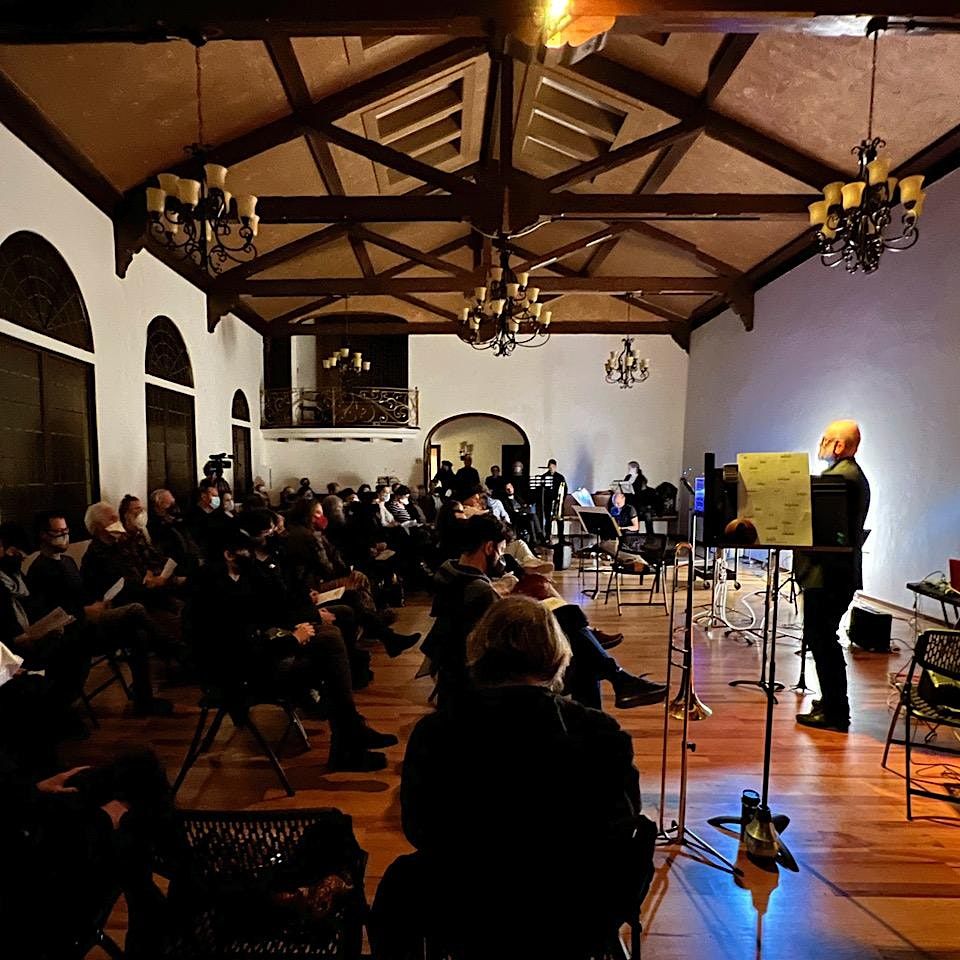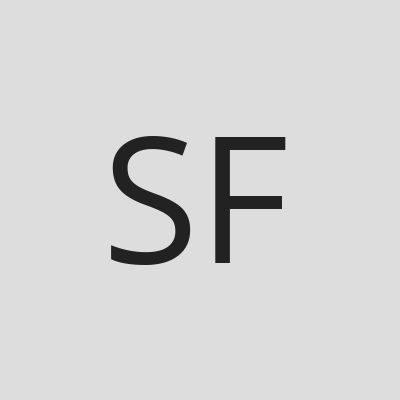MOSSWOOD SOUND SERIES
Schedule
Sun Jun 04 2023 at 07:00 pm to 10:00 pm
Location
Mosswood Chapel | Oakland, CA

About this Event
- sunday may 7, 2023 7p duo b / david slusser + safa shokrai
- sunday may 7, 2023 7p duo b / david slusser + safa shokrai
- sunday may 14, 2023 7p lachenmann & sciarrino solo clarinet / oakland reductionist orchestra
- sunday may 21, 2023 7p bernal hill players / hadley mccarroll plays matthew welch
- sunday may 28, 2023 7p heglin + louchard / graves + er / michalak + looney + dimuzio
SUNDAY MAY 7 2023 7pm
DAVID SLUSSER and SAFA SHOKRAI present Cinema, a game-piece score for improvisation.
duo B. (LISA MEZZACAPPA, bass + JASON LEVIS, drums) preview/premiere Incomplete, Open (2023), a new work for improvising duo with network-based scoring system designed & programmed by TIM PERKIS.
ABOUT INCOMPLETE, OPEN
Today we are pleased to present a Bay Area preview of a new work we are premiering at TENOR (International Conference on Technologies for Music Notation and Representation) in Boston next week, of a new composition and digital scoring system created in collaboration with electronic musician Tim Perkis. More than a few years ago, we discovered visual artist Sol LeWitt’s series of drawings and sculptures, Incomplete Open Cubes (1974/1982), where he explored the 122 ways of "not making a cube, all the ways of the cube not being complete." We were transfixed by the obsessive, iterative quality of the work, and by the vast array of quirky symbols that LeWitt’s serial process generated. It seemed to us that these symbols—each unfinished cube, whether perceived as a line drawing in two dimensions or a sculpture in three—could give rise to a system of musical notation.
While LeWitt’s process involved setting up a scenario and letting it run its course through serial operations, we decided to engage with the unsolved cubes more poetically, letting our compositional ideas flow from the character and personality of individual shapes. We organized the cubes into related “series” or “genealogies,” composed musical material (vocabulary) both for series and for individual cubes, and also created processes (syntax) for how pre-composed material can interact and be manipulated, transformed and developed through improvisation in the course of performance. As we were creating this work and formulating its rules of engagement, we realized that we were developing a real-time collaborative compositional tool based on our own proclivities and interests as improvising composers—one that offers us options for musical content, form and procedure which may not emerge organically from a completely improvised performance.
The network-based digital score Tim programmed allows us to choose a “set” of a grid of cubes for any given performance ahead of time, and then select individual cubes or series of cubes in real time via an iPad control panel as we are playing. These cubes direct us towards composed musical material or rules for processing it—with listeners able to follow our decisions on the overhead screen as areas of the grid of cubes are selected and deselected throughout the performance. Our hope is that our musical decisions will be more transparent to audiences through this ability to watch the grid as we manipulate it over the course of our set, to help guide listeners in understanding the trajectory of our performance and our evolving relationship to the sounds and structures encoded in the cube symbols.
ABOUT CINEMA
Accelerating the Narrative Score for Improvisation using Film Language.
(DISCLAIMER: This is NOT a performance reacting to projected images.)
Narrative has been a part of music since earliest times. It may be what the whales were singing about before humans came on the scene. Improvising artists use it overtly or subconsciously to guide their work. While it seems oxymoronic to write a score for improvised music, “Improv” needs all the help it can get. This score takes the narrative map one step further, using the shorthand of film language, which took leaps over literary narrative in real time.
When people began to edit motion pictures to tell larger stories, about 120 years ago, audiences were initially confused about the juxtapositions of images across time and space. Within a decade, though, the understanding of this linear collage had spread worldwide. It was heralded as a brand new art form.
Though not engaged mechanically, music was part of the presentation almost from the start, in all but the most threadbare nickelodeons. A whole sublanguage of music for cinema was established before the advent of sound-on-film roughly 90 years ago. In its subservient capacity, film music developed its own subtle codes; tracking emotional development, setting tonal ambience (literally and figuratively), and underscoring physical and psychological action. If you weren’t sure how the images made you feel, the music would tell you what the filmmakers wanted you to feel.
This score for improvisation is a type of game piece. The performers follow a set of prompts drawn from references to film archetypes, conventions, clichés, and memes, not exclusive to musical score per se. The structure is film’s typical three acts, each containing a series of scenes. We will pause after each act and reveal some of the scene prompts. Performances of this piece can be linear or random, depending how the scenes are shuffled. In no way are we meant to all be seeing the same movie in our heads. What is meant to come through is the dramatic scaffolding and emotional arcs.
Now, more than ever, we are living in a screen culture.
duo B., the San Francisco Bay Area improvising and composing ensemble of percussionist JASON LEVIS and bassist LISA MEZZACAPPA, is a musical think tank of grand schemes and impossible scenarios. For more than a dozen years, the ensemble has developed and refined its singular approach to improvisation and composition, through cross-disciplinary projects with film and video, collaborations with improvising instrumentalists at home and abroad, study of repertoire by like-minded composer-improvisers, and immersion in the improvised-composed musical worlds of masters Wadada Leo Smith, Anthony Braxton, Cecil Taylor, Henry Threadgill, and others. Mezzacappa and Levis also co-lead the duo B. Experimental Band (dBxB), an unwieldy expansion of the duo into a large ensemble with flexible instrumentation and evolving personnel that performs in the Bay Area and when necessary, online.
SAFA SHOKRAI is inspired by solid objects and abstract concepts. He strives to create the soundtrack for the film we all live in. Based in the Bay Area, Safa Shokrai has performed in many bands as both a freelancer and band leader in his 25 years as a professional musician. He has had the opportunity to study with jazz legend Ray Brown, the late great Jeff Chambers, and local stalwart Marcus Shelby. Safa has had the opportunity to travel around the world making music and brings all the music styles he has absorbed into his practice, from Tuareg to South Indian to European Romani. Currently he is working on composing new music for several bands he is involved with, including The Lost Shapes and Levitator, and is looking forward to recording some albums this year.
DAVID SLUSSER started his career in cinema as a member of a PBS film crew in Cleveland in 1975. He has been performing improvised music in the San Francisco Bay Area since 1977. He started on the ground floor of Lucasfilm’s sound division in 1984, prior to the construction of Skywalker Ranch. David has worked for George Lucas, Francis Coppola, David Lynch and the early Pixar Directors. In 1993 he received an Emmy award for editing in the Young Indiana Jones television series. Staying active musically, David developed a lasting relationship with composer John Zorn, produced CDs of his material in a group with homeboy Ralph Carney in the band Rubber City, played in trio with drummer Han Bennink and vocalist Mike Patton at the 1996 Saafelden Jazz Festival in Austria, received two prizes in the 1999 Julius Hemphill Composition Awards, including first prize for jazz orchestra, played again with Patton in his large ensemble at the 2010 Hardly Strictly Bluegrass Festival, and was an electronics sideman in trumpeter Dave Douglas’s “found film” performance at Stanford in 2014. More recent work has been creating a book of arrangements for the five horned Stray Horns ensemble.
Where is it happening?
Mosswood Chapel, 3630 Telegraph, Oakland, United StatesEvent Location & Nearby Stays:
USD 20.00
